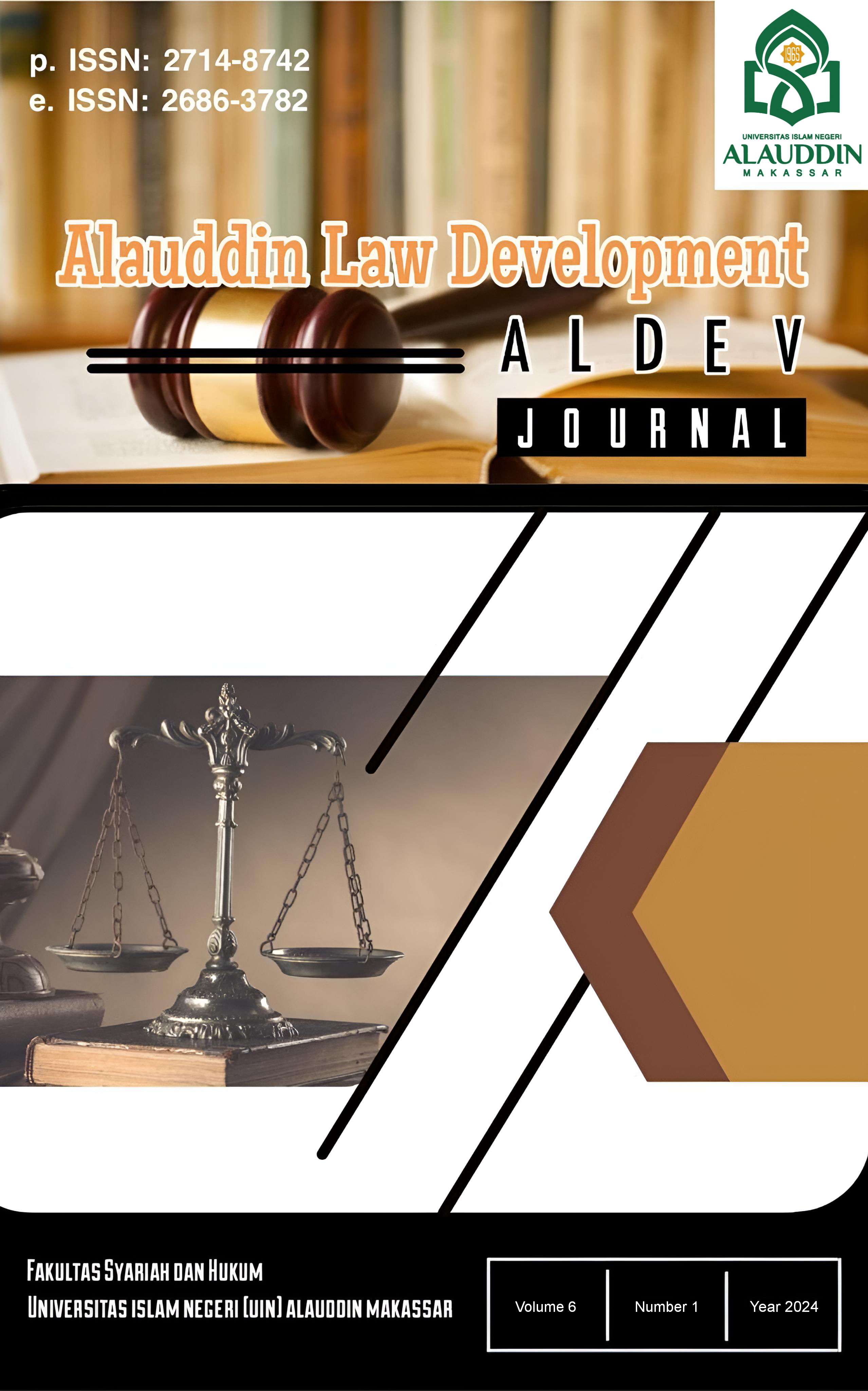Cyber-Sabotage from The Perspective of Information and Electronic Transactions Regulation
Abstract
Most cyber criminals on the internet will be ensnared by Law Number 11 of 2008 concerning Electronic Information and Transactions. The law should offer protection to internet users with good intentions, and provide strict action for cybercrime, especially cyber sabotage actors who disrupt electronic systems and even cause electronic systems to not work properly. Similarly, in Article 5, namely obtaining evidence, there are many obstacles, especially against perpetrators of crimes in Article 33 of Law Number 11 of 2008. Based on the results of the study, it can be concluded that in addition to creating good laws, it also builds the skills of law enforcers to especially find evidence of cybercrime (cybercrime) which is not easy because the crime is in cyberspace by sabotaging the electronic system. In addition, the perpetrators of crimes also hide their identity and the actions they take in cyberspace which is a form of protection.
References
Andi Hamzah, Hukum Pidana Indonesia, Sinar Grafika, Jakarta, 2017.
Achmad Ali, Menguak Tabir Hukum, edisi kedua, Citra Aditya Bakti, Bogor, 2008
Andi Sofyan, Nur Azisa, Hukum Pidana, Pustaka Pena Mas, Makassar, 2016.
Amanda Lenhart, Michele Ybarra, Kathryn Zickuhr, Myeshia Price-Feeney, “Online Harassment, Digital Abuse, And Cyberstalking in America”, Center for Innovative Public Health Research.
Barbara A. Ritter, “Deviant Behavior in Computer-Mediated Communication: Development and Validation of a Measure of Cybersexual Harassment”, Journal of Computer-Mediated Communication, 2014, 19 (2).
Barda Nawawi Arief, 2010, Kapita Selekta Hukum Pidana, Citra Aditya Bakti, Bandung
Harwood, S., & Eaves, S. (2020). Conceptualising technology, its development and future: The six genres of technology. Technological forecasting and social change, 160, 120174. https://doi.org/10.1016/j.techfore.2020.120174
Irwansyah dan Ahsan Yunus, Penelitian Hukum: Pilihan Metode & Praktik Penulisan Artikel, Mirra Buana Media, Yogyakarta, 2020.
Michael L. Pittaro, Cyberstalking: An Analysis of Online Harassment and Intimidation”,
International Journal of Cyber Criminology, 1 (2), 2007, Hal. 180.
Soerjono Soekanto, Kriminologi: Suatu Pengantar, Cetakan Pertama, Ghalia Indonesia, Jakarta, 1981.
Tjaden, P., & Thoennes, N. Full report of the prevalence, incidence, and consequences of violence against women: U.S. Department of Justice, Office of Justice Programs, 2000.
Utin Indah Permata Sari, Kebijakan Penegakan Hukum Dalam Upaya Penanganan Cybercrime yang dilakukan Oleh Virtual Police Di Indonesia, Mimbar Jurnal Hukum, 2 (1), 2021.
U. S. Department of Justice. (2005). Prosecutors in State Courts, 2005. 12
National Centre for Cyberstalking Research, A Practical Guide to Coping with Cyberstalking, Andrews UK Limited, 2015.
Siemieniecka & Skibinska, “Stalking and Cyberstalking a Form of Violence”, Proceeding of The International Scientific Conference, 2019, Vol. 3.
Teguh Prasetyo, Hukum Pidana, PT Raja Grafindo Persada, Jakarta, 2013.
Warren Chik, Harassment through the Digital Medium A Cross-Jurisdictional Comparative Analysis on the Law on Cyberstalking, Journal of International Commercial Law and Technology, 3 (1), 2008.
Copyright (c) 2024 Dirga Agung, Andi Dewi Pratiwi

This work is licensed under a Creative Commons Attribution-ShareAlike 4.0 International License.


